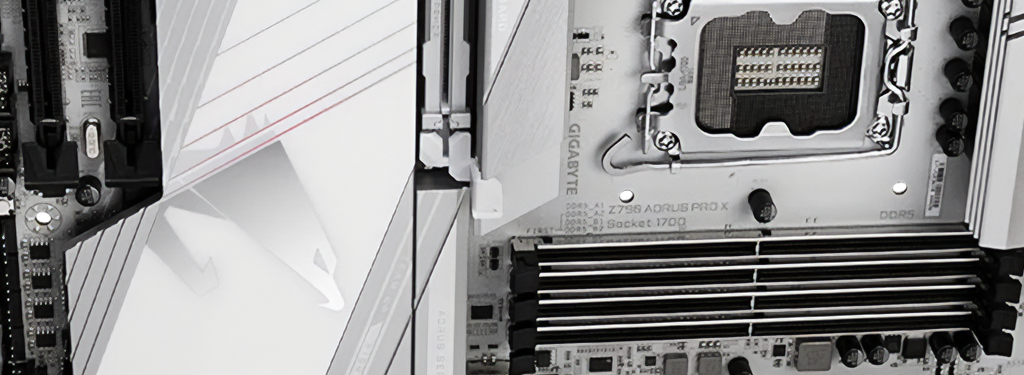When building a gaming PC, picking the right motherboard is very important because it connects all of the other parts and tells you how to update in the future. We'll tell you everything you need to know to choose the best game PC.
1. Form Factor
First, find out what size motherboard you need to make sure it fits in your case and meets your growth needs:
- ATX: With multiple expansion slots and room for future upgrades, this is the most popular form factor.
- Micro-ATX: It's smaller than ATX, but it still has enough expansion slots for most players.
- Mini-ITX: Very small, good for small form factor builds, but not many expansion spots.
- E-ATX: This is an extended form of the normal ATX connector that has more room for extra RAM, PCIe slots, and other improvements. It's perfect for high-performance gaming and professional workstations.
2. Socket Type
The CPU must be able to fit in the motherboard socket:
- Intel: For 10th and 11th Gen CPUs, look for LGA 1200 connections. For 12th to 14th Gen CPUs, look for LGA 1700 ports.
- AMD: A lot of Ryzen CPUs can work with AM4 sockets, but the newest Ryzen chips only work with AM5 sockets.
3. Chipset Compatibility
The motherboard's features and abilities, such as its ability to speed and support for newer technologies, are set by the chipset:
- Intel Z Series: The best for overclocking and building high-performance game systems.
- Intel B and H Series: With few overclocking options, it's good for affordable to mid-range builds.
- AMD X Series: Perfect for overclocking and using Ryzen CPUs that are very fast.
- AMD B Series: A good balance between price and speed that allows for some overclocking.
4. RAM Compatibility
Check the motherboard for:
- Maximum RAM capacity: How much information it can hold, which is usually up to 128GB. But since 48GB sticks came out not long ago, many motherboards can now hold 192GB.
- Speed support: The speed of RAM the motherboard can utilize effectively.
- Slots: The number of RAM slots, which determines future upgradeability.
5. Expansion Slots and Connectivity
A gaming motherboard should have:
- PCIe slots: For graphics cards, sound cards, or additional storage. Ensure there's at least one PCIe x16 slot.
- Storage options: Look for SATA and NVMe M.2 slots for SSDs to ensure fast game load times.
- USB ports: Ample USB ports, including USB 3.2 and USB Type-C, for various gaming peripherals.
- Networking: Ethernet ports are essential, and Wi-Fi support is a plus if you prefer wireless connections.
6. Aesthetics and Build Quality
Many gamers prefer motherboards with:
- RGB lighting: To match the aesthetic of their gaming setup.
- Robust build quality: Look for features like reinforced PCIe slots and high-quality capacitors that ensure longevity.
7. BIOS and Software
Make sure the motherboard's BIOS interface is easy to use. This is important for quick setup and debugging. For good maker support in terms of BIOS updates and driver availability is another thing to look for.
8. Price
Set a budget and keep in mind that more expensive motherboards often have better speed and more features, but that doesn't mean that games will run faster. Check the price against the qualities you need the most.
When picking the right motherboard, you need to think about a lot of things, like how well it works with your CPU, the size of your case, the speed features you want, and your budget. If you think about these things, you can choose a motherboard that meets your game needs and has room for upgrades in the future. Always read reviews from other users and professional opinions before making a choice that will help you build the best game setup possible.

